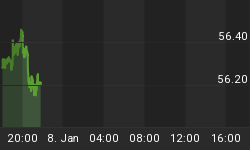Thanksgiving weekend wasn't exactly peaceful for the world's central bankers. On Friday the dollar capped a down week with a near-vertical fall that only stopped because the markets closed. So while the rest of us were watching TV and blissfully pigging out, our economic policy makers spent two anxious days contemplating Monday's open and the possibility that, with global trade imbalances at unsustainable levels, China actively diversifying out of dollars and Iraq dissolving into civil war, the dollar has finally entered its death spiral.
A year or two ago this wouldn't have been so stressful. Instead, first thing Monday morning the response would have been swift, decisive and, maybe, two-pronged. Central banks would have bought dollars and dumped yen and euros to prop up the dollar (that's the public prong). Meanwhile (according to a growing number of serious people), shadowy arms of the U.S. Treasury and foreign central banks would have secretly dumped gold and bought up large cap stocks to give the appearance of business as usual in the financial markets. And the markets would have stabilized, with most of us never noticing a thing.
The group doing this hypothetical secret manipulating is commonly known as the "Plunge Protection Team." The term was coined by the Washington Post in a 1997 article about an interagency "Working Group" that formed after the 1987 crash to address such situations in the future:
The four principals of the group -- Rubin, Greenspan, Levitt and CFTC Chairwoman Brooksley Born -- meet every few months, and senior staff get together more often to work on specific agenda items. In addition to the permanent members, the head of the President's National Economic Council, the chairman of his Council of Economic Advisers, the comptroller of the currency and the president of the New York Federal Reserve Bank frequently attend Working Group sessions.
The Working Group's main goal, officials say, would be to keep the markets operating in the event of a sudden, stomach-churning plunge in stock prices -- and to prevent a panicky run on banks, brokerage firms and mutual funds.
Today, the sense among gold bugs and other distrustful souls is that this benign emergency-response function has morphed into an ongoing, multifaceted attempt to rig markets ranging from gold to stocks to currencies, with the objective of hiding the accelerating debasement of all fiat currencies. Analysts point to events like gold plunging in the middle of the night and General Motors stock soaring for no apparent reason as evidence that something strange is afoot. This is still a debate rather than a consensus, though; others consider the idea of government manipulation of stocks and gold to be a delusion. Wikipedia's entry on the PPT has links to a nice selection of articles on both sides of the debate. Read a few and you'll be pretty well versed in the basics.
Without taking a stand on the existence or behavior of the PPT, it's clear that this kind of manipulation is highly doable. It only takes a little capital to move a thinly traded market like gold at 2AM, and central banks have an infinite amount of paper currency at their disposal. So in theory it would be easy for the PPT -- or even a rogue trader at Treasury or the European Central Bank -- to help the dollar and euro by temporarily chasing speculators out of gold. Or by pushing up the price of any given stock, even a large-cap Dow component like GM.
But technically doable doesn't mean risk-free. This time around the sound-money community is onto the game, and the crowd watching for PPT footprints has grown into an army. So IF there is a PPT and IF it routinely messes with gold and stocks, then its operatives have a real dilemma. Tonight and tomorrow would be ideal -- maybe crucial -- times to smack gold and boost stocks, but doing so runs a heightened risk of exposure, thanks to the suddenly large number of eyes on these markets and the ability of the Internet to force-feed fringe ideas to the mainstream media.
So what will it be, Messers Paulson and Bernanke? Remember, the whole world is watching.
















